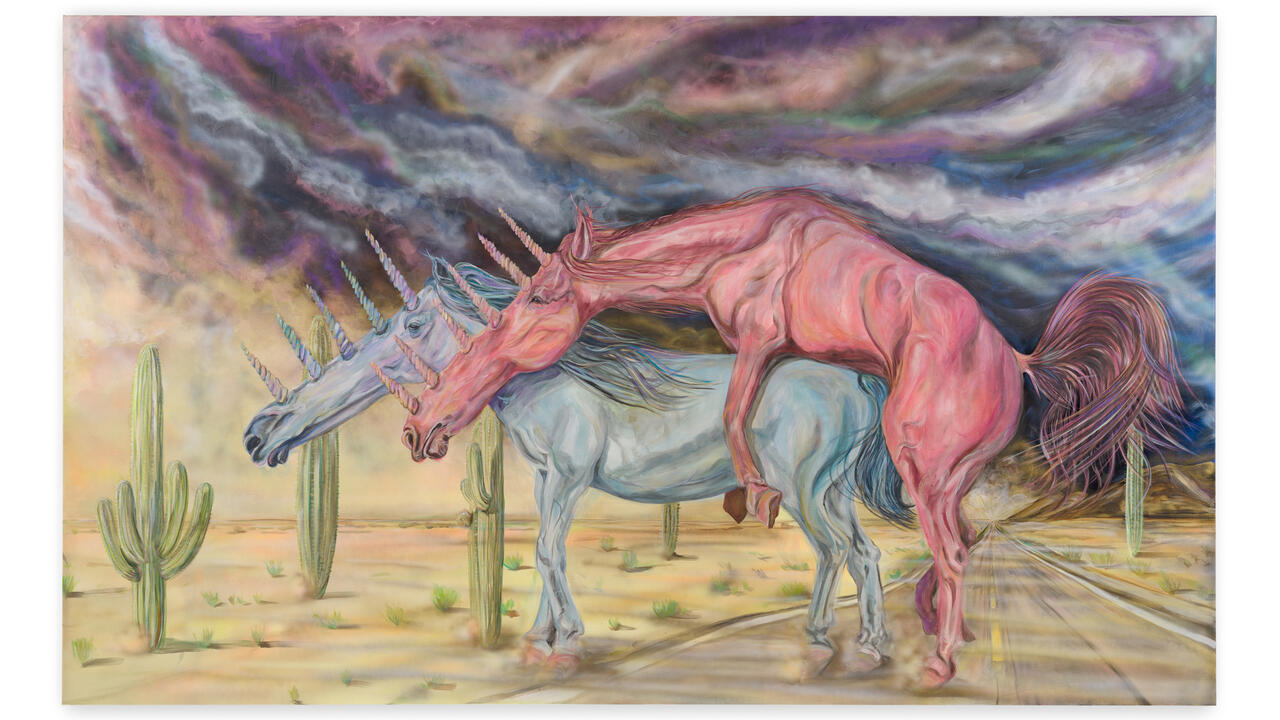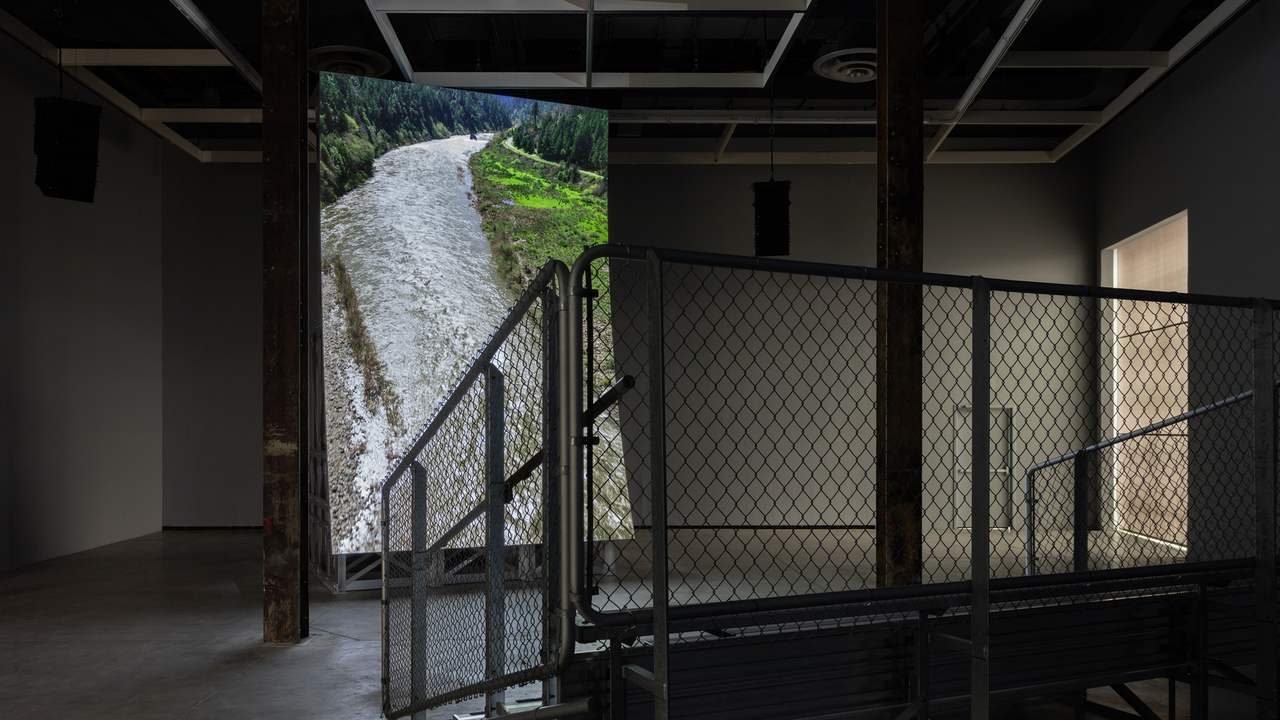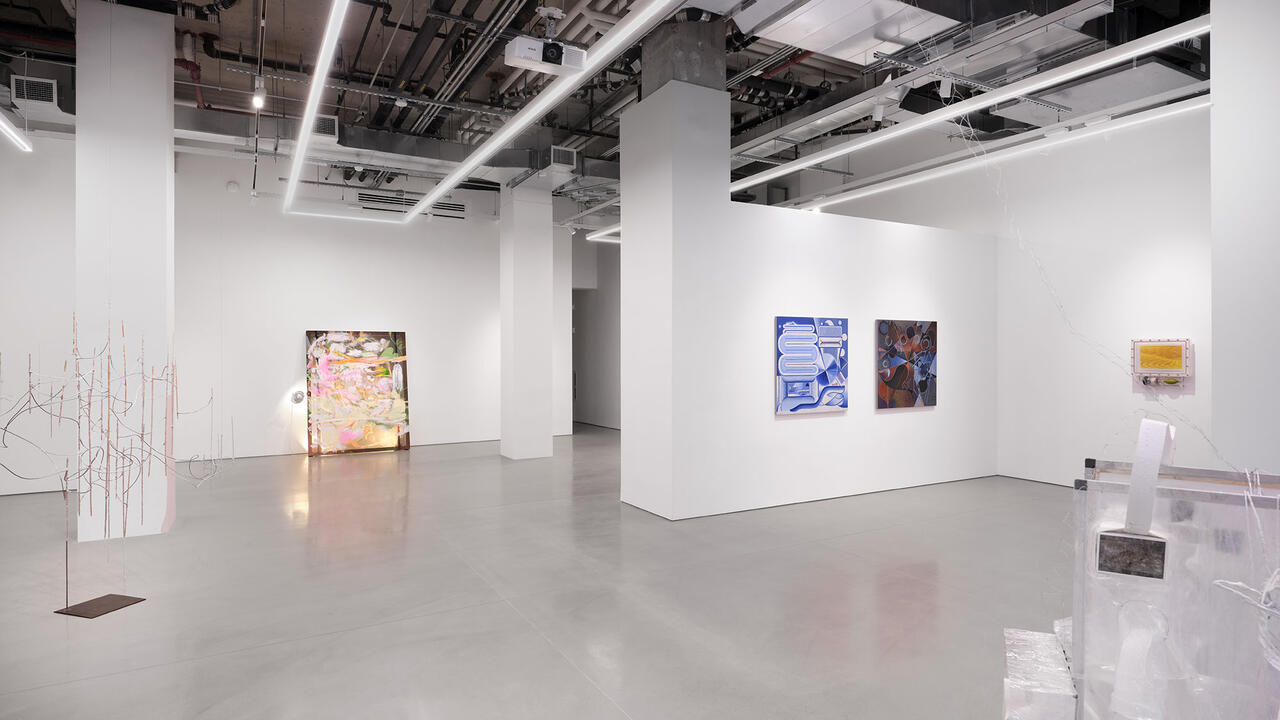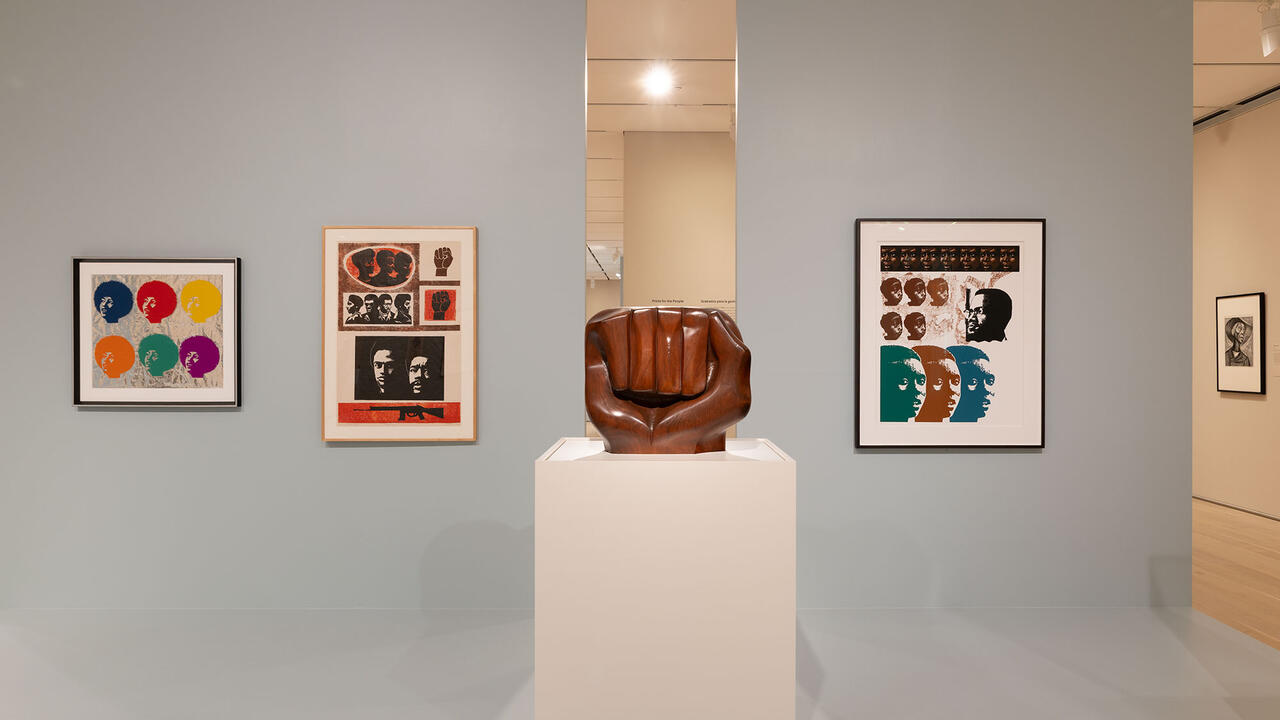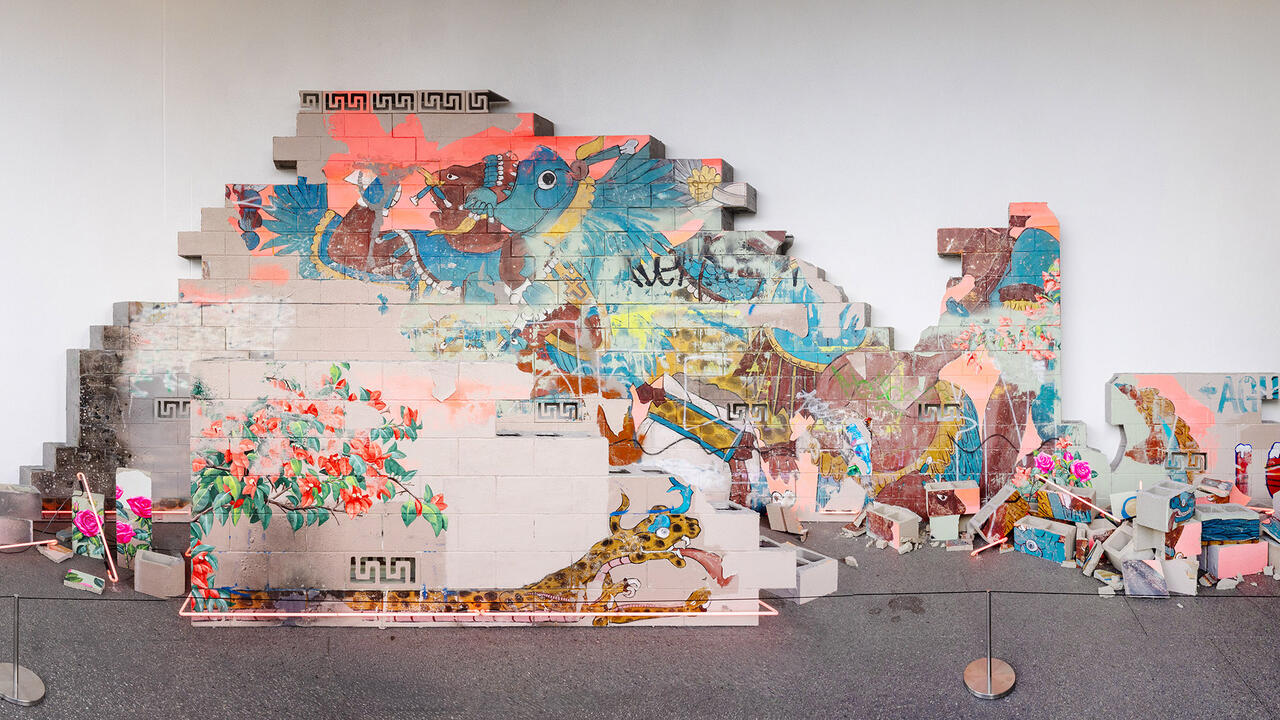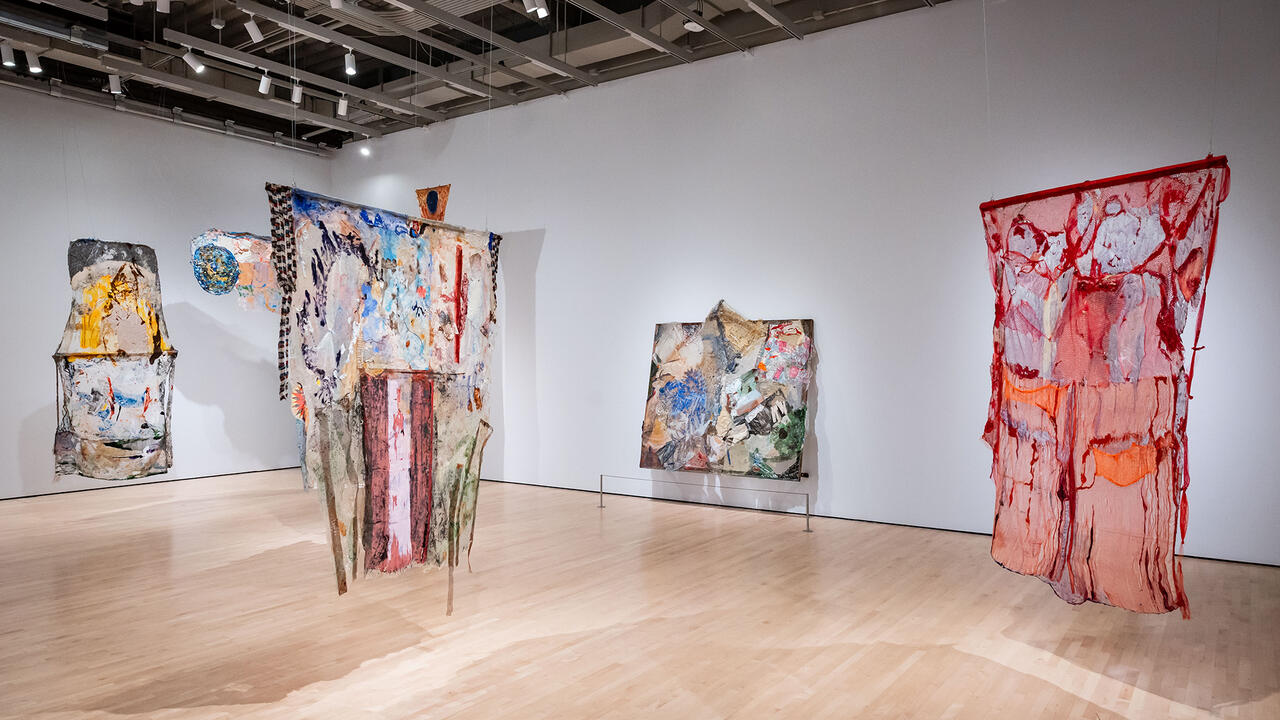‘Afro-Atlantic Histories’ Quietly Rebuts Representations of the Black Experience
The exhibition at the National Gallery of Art, Washington D.C., reminds us that non-Black people cannot excise themselves from the history of the African Diaspora
The exhibition at the National Gallery of Art, Washington D.C., reminds us that non-Black people cannot excise themselves from the history of the African Diaspora

Thomas Satterwhite Noble’s The Last Slave Auction in Saint Louis, Missouri (c.1880) depicts the titular scene but, poignantly, it is hard to tell where the enslaved persons begin and where the white citizens – or ‘massas’ – end. The skin tones of the crowd vary, blending from white to beige to brown. At the centre of the composition, a mulatto child dressed in virginal white stares back at the viewer, her eyes seemingly saying: ‘I am you; you are me.’ The miscegenation narrative at play here echoes throughout the NGA’s new exhibition, ‘Afro-Atlantic Histories’, serving as a quiet rebuttal to representations of the ‘Black experience’ that historically isolate Black history in the broader context of Western history.

Initially organized and presented at Museu de Arte de São Paulo in 2018 – where 450 works were showcased – the NGA’s iteration is more modest, featuring around 130 artworks and documents made in West Africa, the Americas, the Caribbean and Europe between the 17th and 21st centuries. For instance, a painting by the 18th-century white British artist George Morland hangs next to Harlem Renaissance painter Aaron Douglas’s iconic Into Bondage (1936), a scene at dusk that shows shackled men and women walking toward a ship on the horizon, en route to the Americas. In contrast, Morland’s African Hospitality (c.1789) depicts a white family, shipwrecked on the West African coast. In the stormy moonlight, a Black man in a white loincloth sensually administers water to a stricken, thirst-some white man. Like Noble’s painting, it gestures at the comingling of fluids – spit, semen, blood – between people of all ethnicities that occurred as a consequence of the trans-Atlantic slave trade and betrays the notion of purity and discreteness on which the project of whiteness is built.

Drawing out these stories of miscegenation, curator Kanitra Fletcher also underscores how Afro-Atlantic history needs to be meticulously pieced together. Brazilian artist Dalton Paula’s beautifully rendered ‘portraits’, for instance, depict Black Brazilian historical figures whose faces were never documented. Revered for founding a community in northern Brazil for those who escaped enslavement, Zeferina (2018) has a rich coffee complexion, silver droplet earrings and a delicately ruffled neckline, which all accentuate her regal bearing. Disrupting this harmony, Paula sets a white ‘Mr. Potato Head’ nose crudely onto her Black face – like a literal stamp of colonialism – once again pointing us to the racial mixing that defines all Atlantic history.
Titus Kaphar’s Space to Forget (2014) serves as yet another reminder that non-Black people cannot simply excise themselves from Afro-histories. Rendered after a found archive photograph of a Black nanny on all fours with her white ward riding on her back, Kaphar literally cuts the burden on the woman’s back from the painting, leaving a blank space. Yet, juxtaposed with the anonymous reference photograph (Nanny Playing with Child in Petropolis, Rio de Janeiro, Brazil, 1899), the audience cannot escape the reality of the burden – nor maintain the myth that they are not a part of this history.

In a 2018 article for this magazine, I argued that Toyin Ojih Odutola’s portraits of a fictional Nigerian aristocracy were radical for depicting their protagonists at leisure, cementing a Black experience entirely devoid of struggle or oppression. Four years on, ‘Afro-Atlantic Histories’ is setting a similar benchmark, arguing for an art-historical narrative that defies its non-Black viewers to walk away thinking – however beautiful or terrible an experience for Black people it might represent – that it has nothing to do with them.
Main image: 'African-Atlantic Histories', 2022, exhibition view. Courtesy: the National Gallery of Art









